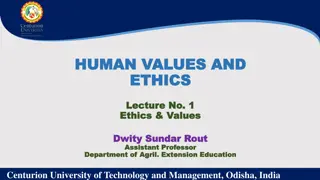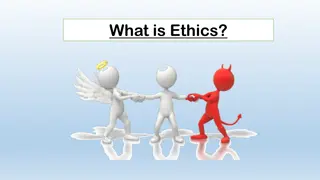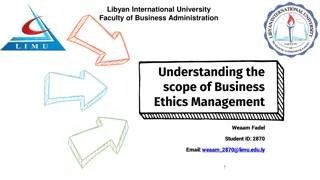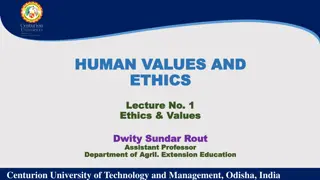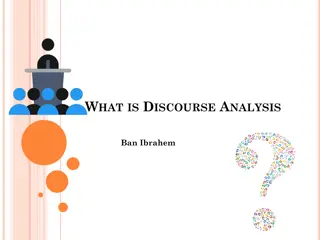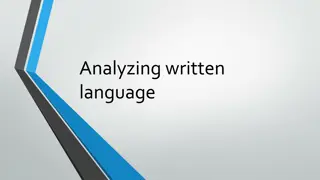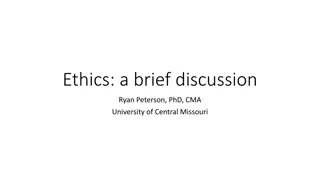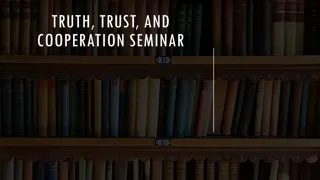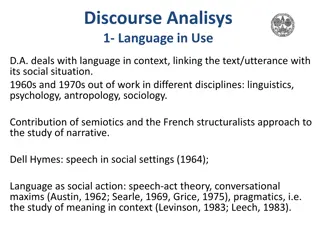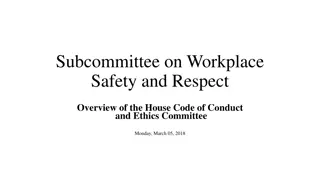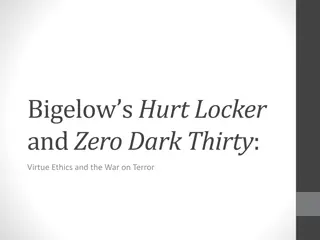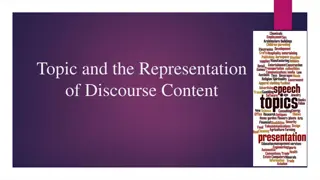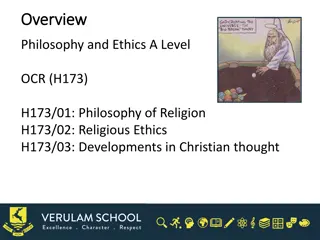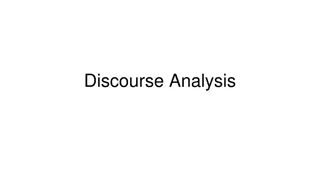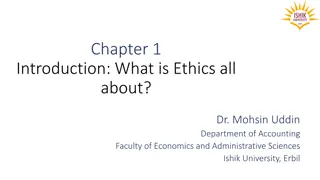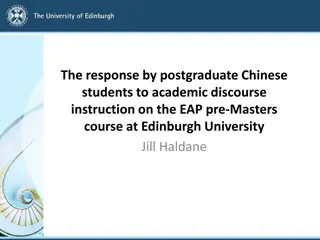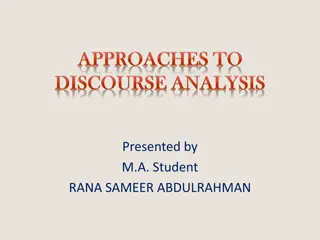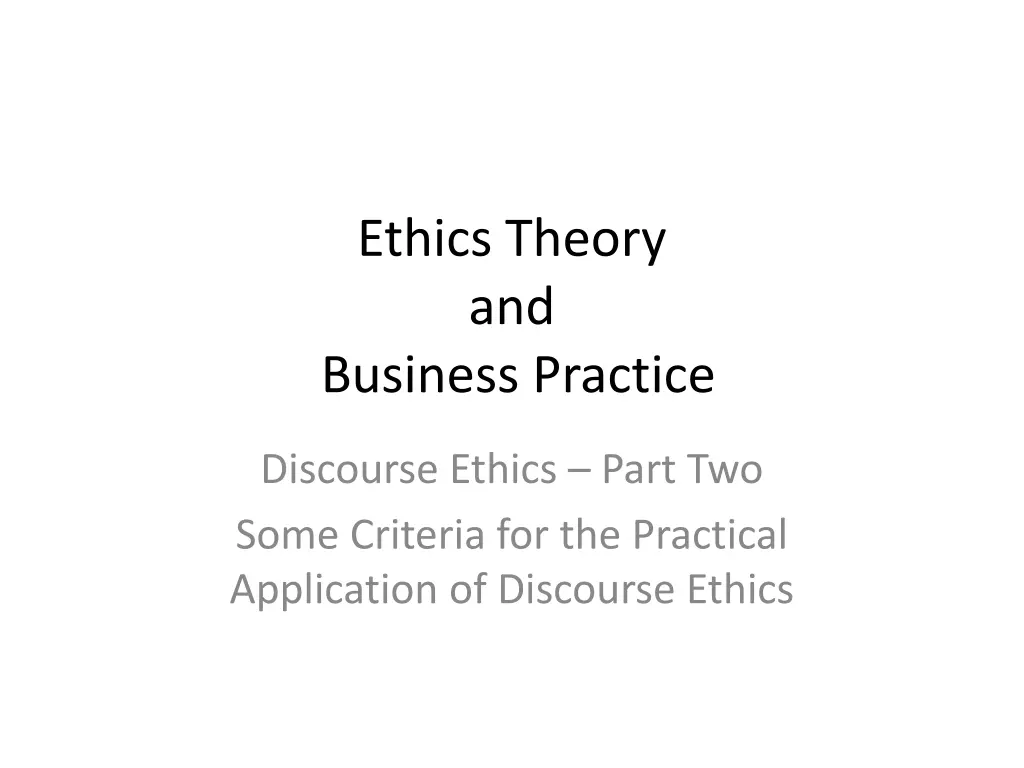
Practical Application of Discourse Ethics in Business
Explore the criteria for integrating discourse ethics in workplace communication, emphasizing employee involvement, motivational discourse, and ethical structures. Learn how workplace democracy can align with discourse ethics for instrumental and ethical benefits.
Download Presentation

Please find below an Image/Link to download the presentation.
The content on the website is provided AS IS for your information and personal use only. It may not be sold, licensed, or shared on other websites without obtaining consent from the author. If you encounter any issues during the download, it is possible that the publisher has removed the file from their server.
You are allowed to download the files provided on this website for personal or commercial use, subject to the condition that they are used lawfully. All files are the property of their respective owners.
The content on the website is provided AS IS for your information and personal use only. It may not be sold, licensed, or shared on other websites without obtaining consent from the author.
E N D
Presentation Transcript
Ethics Theory and Business Practice Discourse Ethics Part Two Some Criteria for the Practical Application of Discourse Ethics
aims to consider the ethically legitimating potential of workplace discourse to outline some criteria that workplace discourse needs to meet if it is to conform to the expectations of discourse ethics to describe some structural features of communication that might help these criteria to be met
workplace democracy practically feasible instrumentally beneficial ethically desirable www.youtube.com/watch?v=UE9QpHFGIlg but, workplace democracy can take many forms so what criteria must it meet to conform to the expectations of discourse ethics?
three sets of criteria: 1. involvement of all employees 2. participating in discourse with the right motivation 3. the structure of ethically legitimating discourse
1: involvement of all employees provide open, equal access beware of informal barriers to participation consider the potential of ICT
theory in practice discourse and open door policies
2: participating in discourse with the right motivation with the intention of reaching shared understanding with a commitment to listening to other people s views and amending one s own perspectives accordingly rather than with the aim of winning the debate
contrasting communicative action to strategic action acting strategically: entering discourse with the intention of imposing some agenda that we value and using discourse as a means of gaining other people s support for that agenda acting communicatively: entering discourse with the intention of reaching shared understanding (Habermas, 1984/1981, 1987/1981, 1990/1983)
3. the structure of ethically legitimating discourse Habermas: the fundamental purpose of all human communication is to reach shared understanding, which needs to be achieved in relation to: the factual content of what is said people s authority to say what they say what people intend to achieve by saying what they say
such shared understanding can only be achieved if speakers are free to raise and challenge validity claims across each of these dimensions, i.e. if: Everyone is allowed to introduce any assertion whatever into the discourse Everyone is allowed to question any assertion whatever (Habermas, 1990/1983: 89)
theory in practice workplace democracy at Suma
key points for workplace democracy to meet the expectations of discourse ethics, open, equal access for all affected stakeholders should be facilitated, which may involve dismantling informal barriers to participation all should be encouraged to participate with the objective of reaching shared understanding, rather than trying to fulfil strategic objectives all should be able to raise and challenge validity claims concerning the factual content of what is said, the authority of a speaker to say it, and their intention in saying it
references Habermas, J. (1984/1981) The Theory of Communicative Action, Volume One: Reason and the Rationalisation of Society, T. McCarthy (trans.). Boston: Beacon Press. Habermas, J. (1987/1981) The Theory of Communicative Action, Volume Two: Lifeworld and System: A Critique of Functionalist Reason, T. McCarthy (trans.). Boston: Beacon Press. Habermas, J. (1990/1983) Moral Consciousness and Communicative Action, C. Lenhardt and S.W. Nicholson (trans). Massachusetts: MIT Press.

